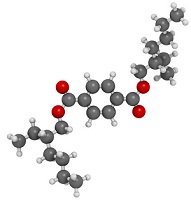What are phthalate plasticizers?
Phthalates are produced by the esterification of phthalic anhydride. The phthalic anhydride is obtained by the oxidation of orthoxylene.
Phthalates appear colorless with a faint odor. They have limited solubility in water. But are miscible in many organic solvents (mineral oil etc.)
Phthalate Plasticizers Benefits & Limitations
| Benefits | Limitations |
|
|
Phthalate Plasticizers Applications
- Cost: Phthalates are used as PVC plasticizers since the earliest days of flexible PVC. These plasticizers are both inexpensive and effective. The collapse of oil prices began in 2015. This further reduced the price of petrochemicals, including phthalate esters. Some phthalate is replaced by notably bio-based products. These alternatives have seen increasing feedstock prices over time. This widens an already present cost differential.
- Performance: Phthalate replacement products have processability and permanence limitations.
- Supply: The worldwide plasticizer market is quite large, with over 7 million tons per year. There’s not enough manufacturing capacity to produce large volumes of phthalate replacements.
- In electrical and electronic applications, they are used for insulating wires and cables.
- Phthalate plasticizers are widely used in vinyl-based building materials. These include floorings and wall coverings. They provide them with flexibility and durability.
Phthalate Plasticizer Regulations
2001-2006 – DINP and DIDP Are Safe for Use in Current Applications
The risk assessment results show that DINP and DIDP pose no risk to human health or the environment in any of their current applications.
2012 – Australia Risk Assessment Confirms DIDP & DINP Safe for Toys
The Australian Government Department of Health and Aging reported the following. The current exposures to DINP do not indicate a health concern for children even at the highest exposure levels. These exposures have no restrictions on the use of DINP in toys and child-care articles.
2013 – EC Confirms Safe Use of DINP and DIDP in all current consumer applications
The European Commission (EC) has re-evaluated the restriction on plasticizers DINP and DIDP. They concluded that:
- No unacceptable risk has been characterized for the uses of DINP and DIDP in articles that can be placed in the mouth.
- The evaluation of potential substitutes has been less pertinent due to the absence of any further risks from the uses of DINP and DIDP.
2014 – US CHAP Lifted Ban on DIDP, DNOP and Prohibits >0.1% level of DINP in Child Care Products
U.S. Consumer Product Safety Commission (CPSC) established a Chronic Hazard Advisory Panel (CHAP). This panel studies and reviews the potential adverse effects of phthalates used in child care articles on children’s health. This was done under section 108 of the Consumer Product Safety Improvement Act of 2008:
- Three types of phthalates (DEHP, DBP, BBP) are banned permanently in any amount greater than 0.1% in children’s toys and certain child care articles.
- Three additional types of phthalates (DINP, DIDP, DNOP) were banned on an interim basis in any amount greater than 0.1%.
CHAP provided its report and recommended the following actions:
- Permanent ban on DBP, BBP, and DEHP remains unchanged. Additionally, DIBP, DPENP, DHEXP, and DCHP at levels greater than 0.1% are to be added to the existing permanently prohibited list.
- Interim Ban on DINP at levels greater than 0.1% in children’s toys and child care articles to be made permanent.
- Current bans on DNOP and DIDP be lifted
- Use DIOP on an interim basis until sufficient data are available. This was done to determine whether a permanent restriction is necessary.
- No action on DMP, DEP, and DPHP at this time but it did encourage appropriate agencies to gather necessary exposure and hazard data. This was done to estimate total exposure to the phthalate alternatives and assess the potential health risks.
There were also efforts early in the Obama administration to further regulate phthalates. This took place under the authority of legislation passed in 1976, the Toxic Substances Control Act (See TSCA sec 5b). However, this was never done.
2017 – Danish EPA Proposal on DINP
Following the fourth re-submission in two years, the Danish EPA dossier proposed the classification of DINP as a reproductive agent. It was accepted by ECHA and the public consultation was initiated in April 2017. Through extensive prior testing, regulatory evaluations, and peer-reviewed published scientific reviews the scientific data does not support this classification proposal.
2018 – ECHA RAC Concludes DINP Requires No Classification
ECHA’s Risk Assessment Committee (RAC) has concluded that Di-isononyl phthalate (DINP) does not warrant classification for reprotoxic effects under the EU’s Classification, Labelling and Packaging (CLP) regulation.
RAC undertook a stringent hazard assessment following the rules of the CLP regulation, with the conclusion that, given the lack of evidence of adverse effects, classification is not required. Amongst prior regulatory assessments, the ECHA evaluation of new scientific evidence – endorsed by the European Commission in 2014 – concluded that DINP can be safely used in all current applications. All relevant data are included in the DINP REACH registration dossiers, which were updated in 2015 and 2016.
-
What are the properties of high-quality plasticizers?
-
In what industries or fields is DOP plasticizer used?
-
The importance of plasticizers in industrial production
-
What is the plasticizing principle of plasticizer?
-
What is the scope of the application of plasticizers?
-
Comprehensive introduction to plasticizer classification and related knowledge
